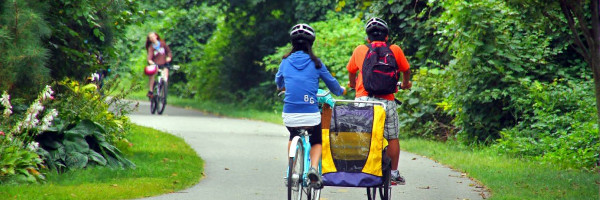Active Transit
| Transportation | |||||||||||||||||||||
|---|---|---|---|---|---|---|---|---|---|---|---|---|---|---|---|---|---|---|---|---|---|

| |||||||||||||||||||||
| Sectors | Transportation | ||||||||||||||||||||
| Contact | Wilfred Pinfold | ||||||||||||||||||||
| Topics |
| ||||||||||||||||||||
Activities
Press
| |||||||||||||||||||||
- Authors
Active transit, also known as active transportation, refers to forms of transportation that rely on human power, such as walking, cycling, and using mobility aids like wheelchairs. It also includes using public transportation like buses, subways, and trams. Active transit encourages active living, as it requires physical activity, and it can help to improve public health, reduce air pollution, and decrease dependence on fossil fuels.
Active transit is considered an important aspect of sustainable transportation and livable communities. It is a way to reduce traffic congestion, improve air quality, and create more walkable and bike-friendly communities. It is an affordable and environmentally friendly alternative to driving a car and can also help to reduce the carbon footprint.
Active transit also can improve access to jobs, services, and other destinations for people who have difficulty driving or cannot afford a car. It also can provide more transportation options for children, older adults, and people with disabilities. Furthermore, it can have positive impacts on public health, by promoting physical activity and reducing air pollution.
In short, active transit is a way of transportation that encourages the use of human power, rather than cars, to get around. It is considered a sustainable, healthy, and inclusive option that allows people to access services and destinations while promoting physical activity, reducing pollution and traffic congestion, and fostering livable communities. Active transit is being encouraged through a variety of strategies, including:
- Building and maintaining pedestrian and bicycle infrastructure: This includes building sidewalks, bike lanes, and trails, as well as improving lighting and signage to make it safer and more convenient for people to walk and bike.
- Encouraging mixed-use development: This involves designing communities that have a mix of residential, commercial, and recreational uses in close proximity. This makes it more convenient for people to walk or bike to work, school, and other destinations.
- Providing education and outreach: This includes programs that educate people about the benefits of active transit, and provide information and resources on how to walk and bike safely.
- Encouraging Public Transportation: This includes providing more frequent and reliable public transportation services, as well as making it more affordable and accessible for people to use, such as providing discounted fare for children, older adults and people with disabilities.
- Offering incentives: This includes offering incentives such as free bike-sharing memberships, or tax breaks for people who choose to walk or bike to work.
- Promoting active transportation policies: This includes promoting policies such as "complete streets" which are designed to accommodate all modes of transportation, including walking, biking, and public transit, as well as cars.
All these strategies are aimed at making active transit more convenient, safe, and accessible for people of all ages and abilities, and promoting healthy and sustainable forms of transportation.




